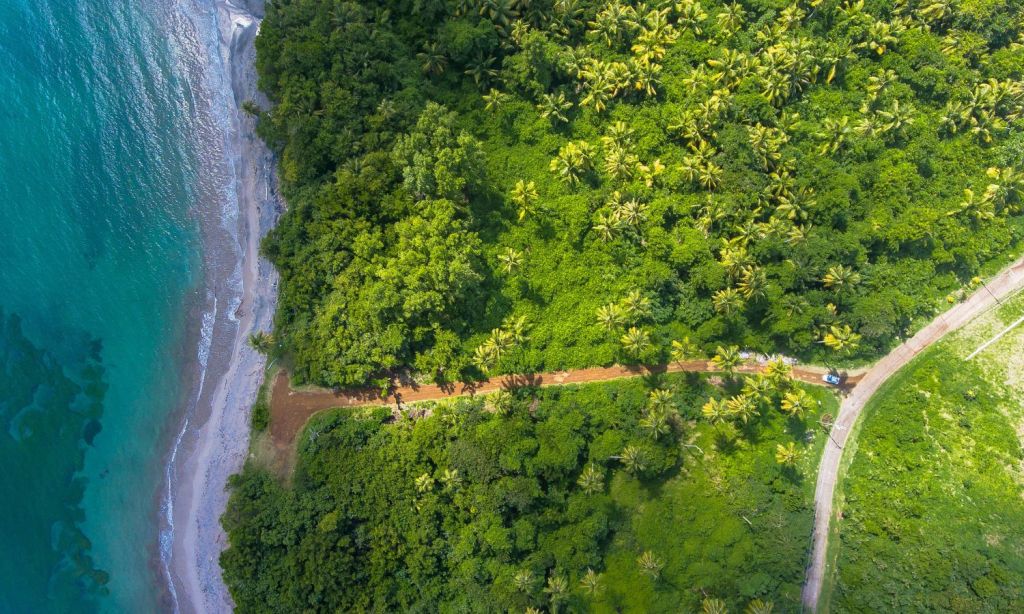Sustainable travel means being more aware of our movements’ impact on the planet — and doing our best to reduce it. According to Booking.com’s Sustainable Travel Report 2023, 64% of Australian travellers say that’s what they’re keen to do when they travel in the next 12 months: move more consciously.
But with over half (58%) in the same report believing sustainable travel options are expensive, it’s safe to say that despite the awareness and enthusiasm, there’s somewhat of a lack of information on how to do so.
I recently travelled to Tasmania as a guest of Booking.com to experience properties in the state with its Sustainable Travel Badge, as well as some sustainable experiences. The biggest takeaway was that making a few small tweaks, opting for more sustainable options, wasn’t all that hard — or expensive.
Ahead I’m sharing some of those sustainable tweaks that you too can make on your next trip. These aren’t just relevant for a trip to Tassie like I did (though, if you haven’t been, I highly recommend). Instead, they can be applied to any upcoming travel you might have — whether it’s a weekend getaway or a month-long trip.
Note that there are countless ways to travel more sustainably — these are just a few. And, if you’re ever in doubt about how eco-conscious a tourism operator claims to be, be sure to do your research. Greenwashing is increasingly common, and the best way to fight it is to investigate.
Become Aware of Your Impact
Firstly, simply being aware of your impact when you travel is a great place to start when looking to move more sustainably. Throughout your trip, you’ll be more considerate of the activities and experiences you do, the waste you produce and the locals whose home area you’re visiting. This awareness alone will then likely inform all the trip decisions you make.
Stay at Sustainable Accommodation
As mentioned, Booking.com has a Sustainable Travel Badge that it awards to properties that make sustainability a key component of their operational routine. The properties are labelled with the badge online.
When looking for sustainable accommodation, generally, look for the option that best supports locals, has minimal environmental impact, and doesn’t destroy local culture. Also, while you’re staying, don’t be afraid to call out amenities or practices you don’t believe are sustainable. Who knows — your feedback might even get them to change it.
Choose a Hybrid or EV Rental Car
If you’re booking a rental car for your trip, look for a hybrid or electric vehicle option. Not only does it mean less impact on the environment, but it’ll also result in you paying less for petrol. This is only if you even have to rent a car, that is. Taking a train or public transport are usually two more sustainable options than renting a car. Though, if it’s between a rental car or a flight, the car is the more sustainable choice.
Dine at Farm-to-Table Restaurants
Finally, look out for farm-to-table restaurants. If you’ve never heard the term ‘farm-to-table’ (also called ‘paddock-to-plate or farm-to-fork) before, it refers to the food served being bought directly from the producer. This means the farmers get more of a profit, and the food is fresher and so tends to taste better.
In Tasmania, I visited The Agrarian Kitchen, a 30 minute-drive outside Hobart. The restaurant has a garden farm behind it where it grows almost all the fruits and veggies it serves. At Fico in Hobart, the focus is on using local, seasonal and sustainable produce, with the menu changing weekly.
Related: Sustainable Travel Is Achievable, But You Have to Do Your Research
Related: Australians Are About to Revolutionise Sustainable Aviation
Read more stories from The Latch and subscribe to our email newsletter.

